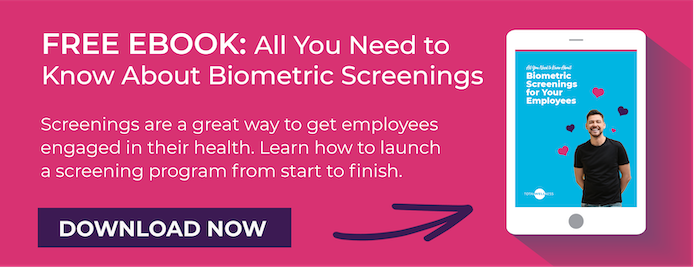 Human resource and wellness professionals have difficult jobs - improve employee health AND be able to document success. With so many tests, numbers and equations that you can use to determine the health of employees, it can be daunting.
Human resource and wellness professionals have difficult jobs - improve employee health AND be able to document success. With so many tests, numbers and equations that you can use to determine the health of employees, it can be daunting.
When it comes to measuring physical health, an employer has many options. They include measures of disability, absenteeism, hospital admissions, insurance premiums, health risk factors, and health risk assessments (HRAs).
But most health experts agree, that when it comes to measuring individual health, there are four key numbers that can save lives. So why not apply that same logic to your worksite wellness program?
Your employees' cholesterol, blood pressure, blood sugar, and body mass index numbers are the key indicators of their risk for serious illness. On-site biometric screenings can measure these four magic numbers so that your employees can make changes to improve their health and reduce the risk of developing heart disease, diabetes, and other serious illnesses. Many diseases are "silent" and affect health long before employees may feel anything wrong, so regular screenings are important.
So what health goals should your employee be striving towards?
Total Cholesterol
Goal is <200
Cholesterol is a fatty substance that bodies need to function. But when there's too much cholesterol in blood, it can build up on the inside walls of arteries and increase the risk of heart disease and stroke. There are no definite symptoms of high cholesterol, so measuring is very important.
Blood Pressure
Goal is 120/80 or less
High blood pressure increases the risk of heart attack, stroke, and kidney disease. It also can damage the brain, eyes and arteries. Anyone can have high blood pressure, and many people do not have symptoms.
Blood Sugar (Glucose)
Goal is <130
Glucose is sugar stored in the blood as the body's main source of energy. The average blood sugar range is between 80 and 120. If blood sugar is too high or too low, it may be a sign of diabetes. Left untreated, diabetes can lead to heart disease, kidney disease, and other complications.
Body Mass Index
Goal is <25
Body mass index (BMI) measures weight in relation to height. A BMI over 25 indicates overweight, and a number over 30 indicates obesity. Extra weight can lead to high cholesterol, heart disease, diabetes, and other serious illnesses.
And just in case you find numbers a tad boring, get some inspiration and check out this fun parody of "Know Your Numbers" based on the classic 80's tune 867-5309.
Image Credit: JD Hancock



